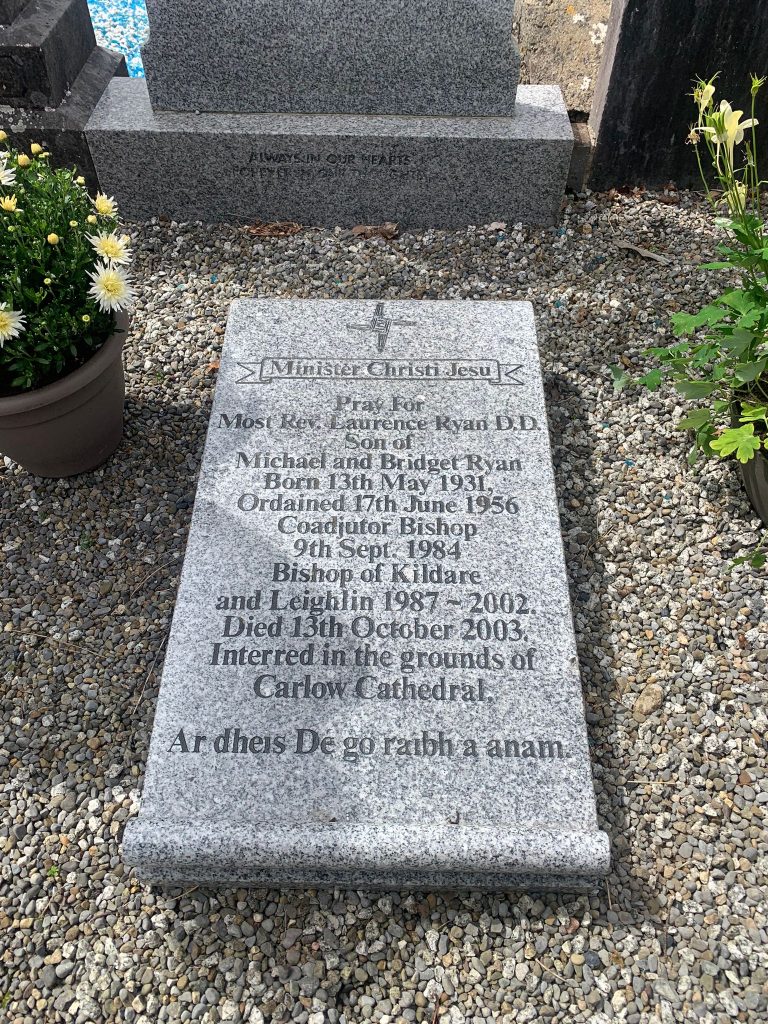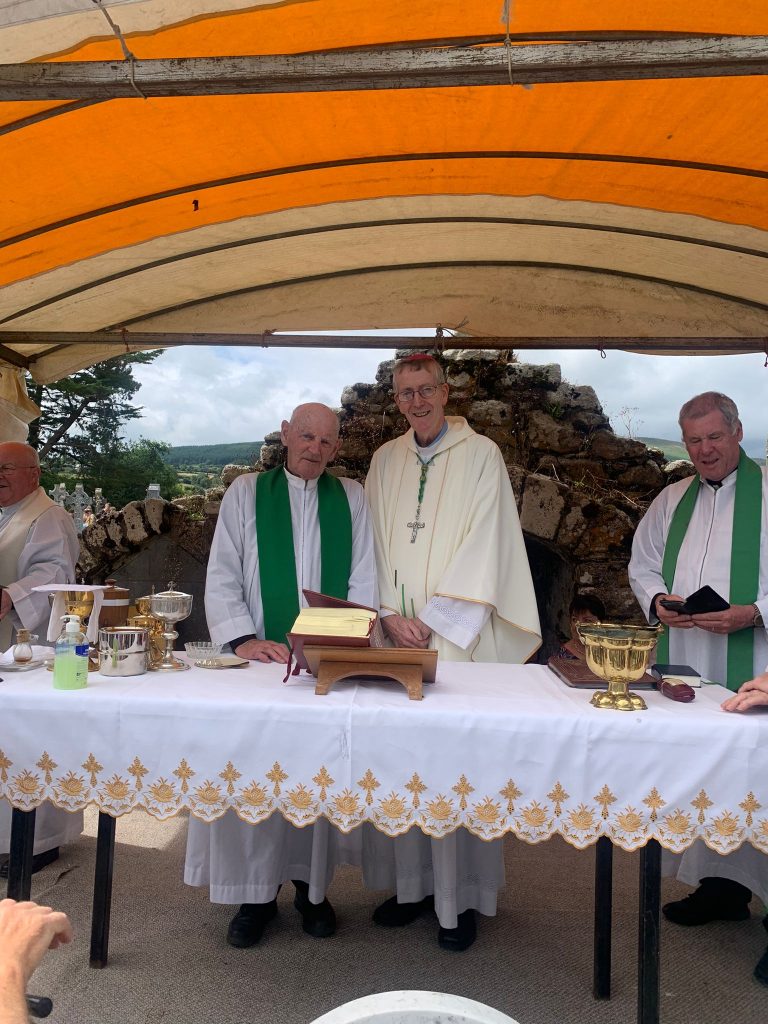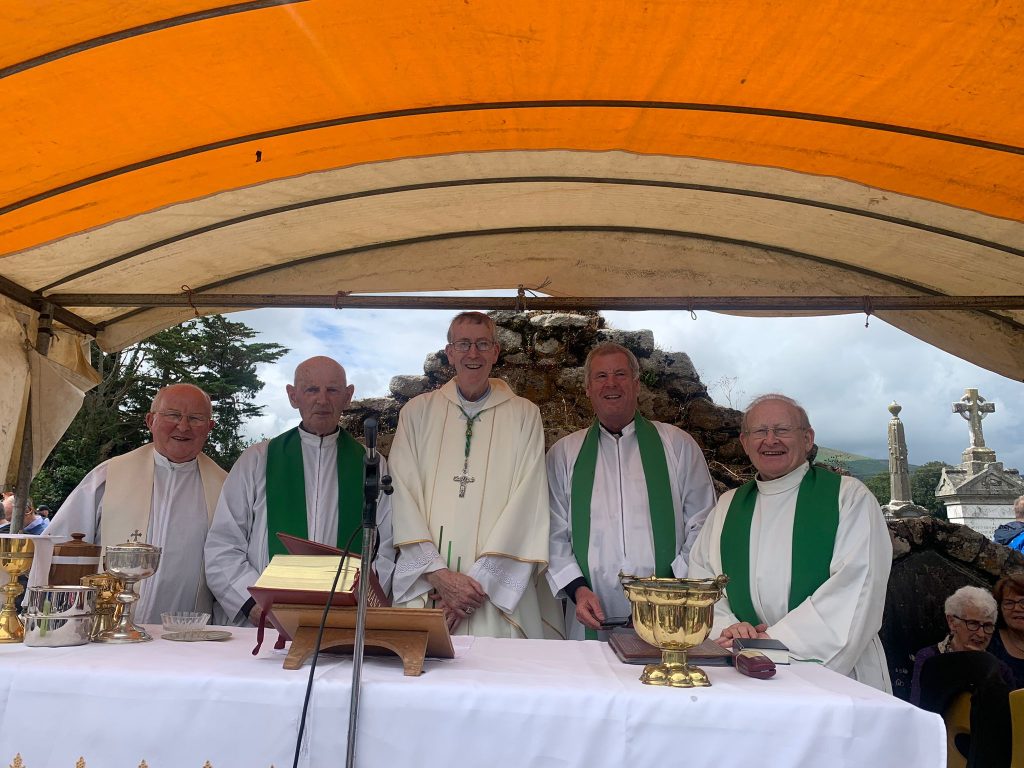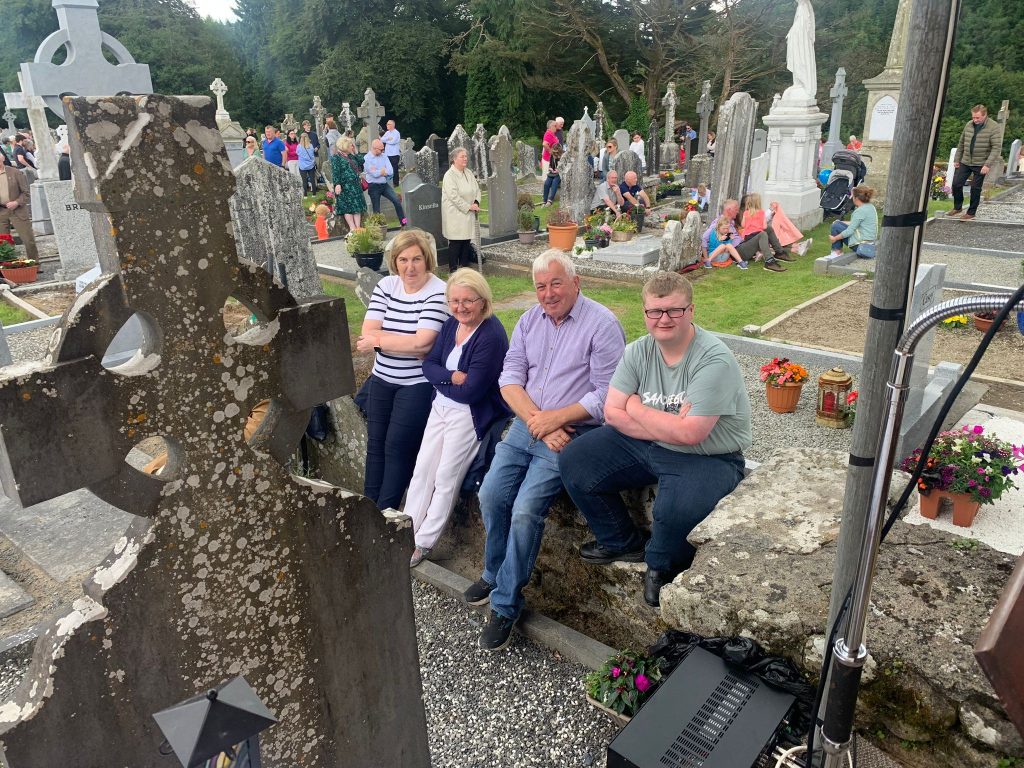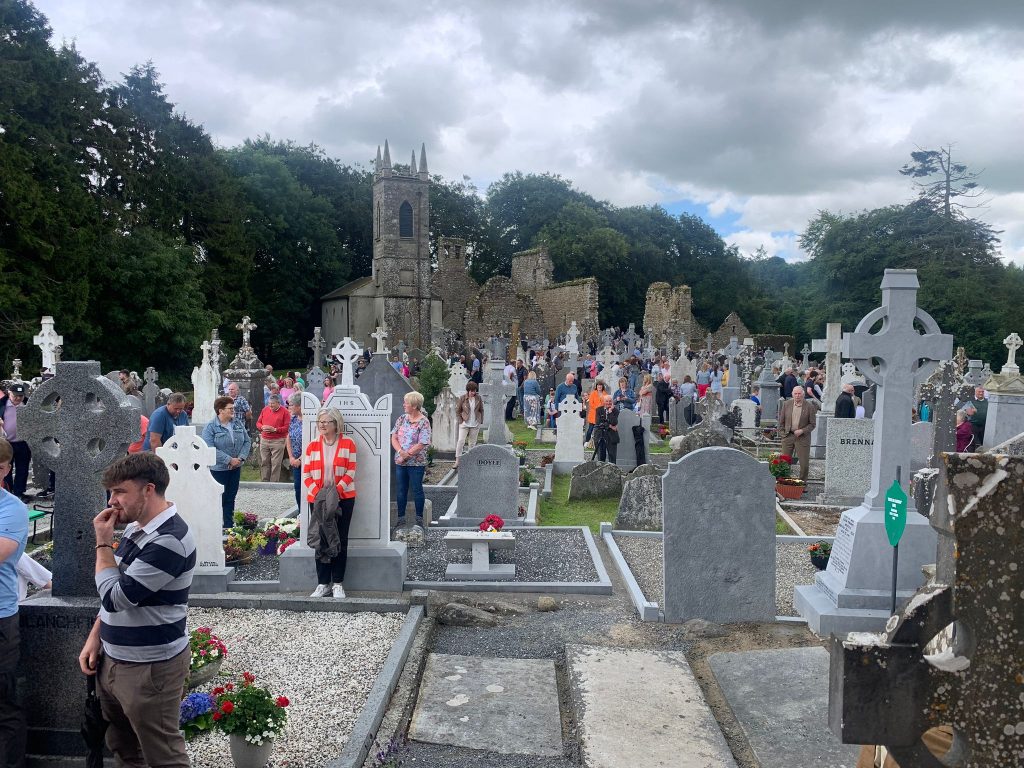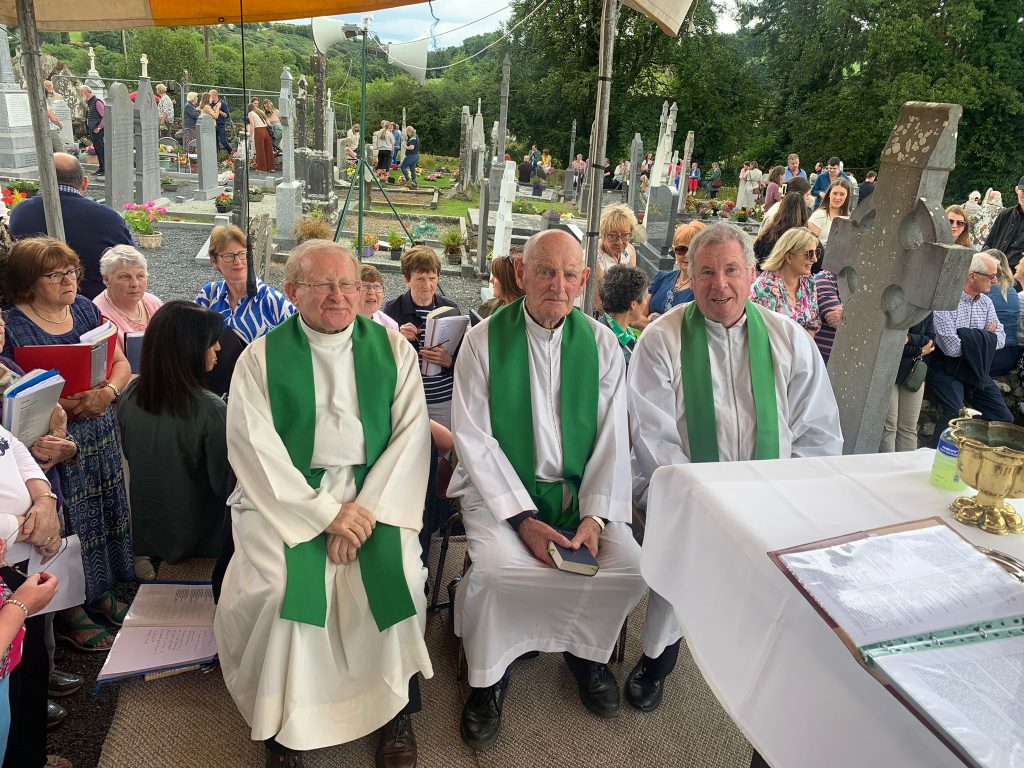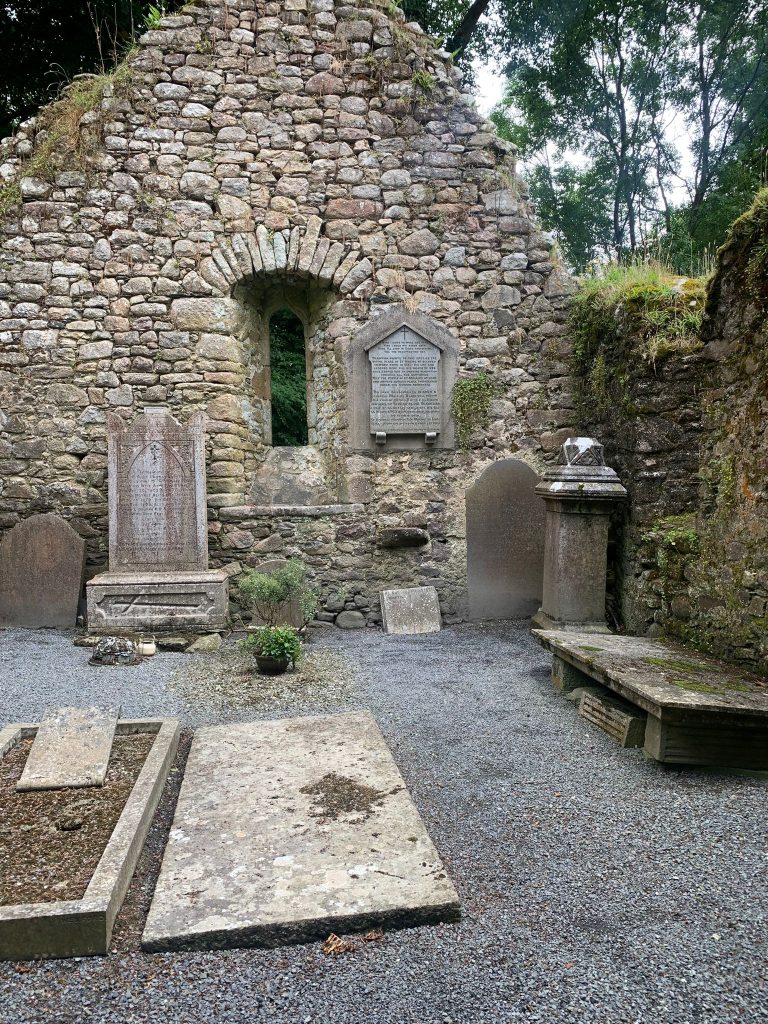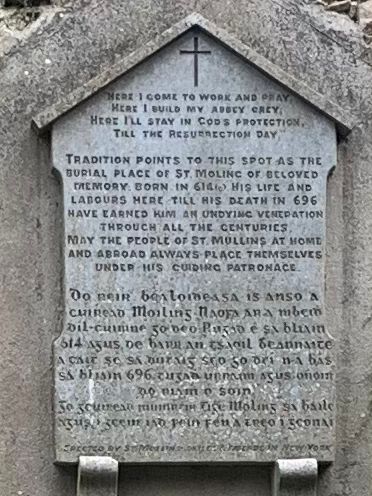Sixteenth Sunday in Ordinary Time – Year B: 21.07.24
1.30pm St. Moling’s Well; 2.00pm Mass – St. Mullins Cemetery
Introduction:
The themes of shepherding and sheep are interwoven throughout scripture but particularly on this the sixteenth Sunday in Ordinary Time. The Sunday that lands in the middle of the summer.
It’s the right time “to rest for a while”[1] and Jesus was of a similar mind. We do so this afternoon as we participate in a tradition that is 1,300 years old, taking part in the Pattern Day here at St. Mullins, remembering the dead, while celebrating the living.
I always associate sheep with breaking out, getting lost, becoming entangled in briars. Shearing the wool was as much an exercise in disentangling briars embedded into a ball of greasy wool, as it was of derobing the sheep weighed down by it’s winter fleece!
We need to shear ourselves of sin, to disentangle the briars of sarcasm and cynicism that poison our life, impair our outlook and cloud our vision – as we experience being held by the shepherd, let us call to mind our sins …
Homily:
On my desk there is a gift I received the first day I moved into Bishop’s House, a few weeks before I would be ordained Bishop, probably around this time eleven years ago. I vividly recall opening the parcel, I like the surprise that opening a parcel brings! It was a beautifully crafted Genesis piece depicting the shepherd holding a tender lamb. The eyes of the shepherd never leave the lamb while the mother ewe at his feet looks up reassuredly, her lamb is in safe hands.
It’s a beautiful piece. In fact I was gifted with two of those very same pieces back in 2013; the second one is on my sitting room mantlepiece. One of those gifts was from Teresa Horan. Teresa worked for many years as housekeeper to the priests of Carlow Cathedral parish; men who served the people of Carlow town and far beyond. The image of a sheep and its tender lamb being carried by the shepherd speaks volumes to me.
Sheep were familiar to us growing up in County Meath. I can’t say any of us really liked them. They always had a clueless vulnerability about them that they would end up entangled in briars, stray into some neighbours field leaving their wool as evidence of the gap we hadn’t fenced off properly, or worse still the sheep lay on their back because of fluid retention and became incpble of rolling over. If we were too late, there was a single lamb or maybe twins who would need a new mother. Often the weakest lamb found a home in an old tea-chest beside the AGA cooker and drank milk from a discarded lemonade bottle.
I still have a photograph somewhere of my dad feeding ‘the pet lamb’ at home with a milk bottle and the youngest grandchild then happily drinking out of another milk bottle – different bottles, but the same concept! That young lad is probably now camping out at Forest Fest Music & Arts Festival in Emo, Dadda is now eighteen years in eternity. Time moves on. No place like a cemetery to make us conscious of time passing. And even moreso in one of the most picturesque and scenic parts of the diocese, here at St. Mullins.
This Pattern Day tradition is 1,300 years old. I remember listening to an RTÉ Radio documentary on the Pattern that was broadcast last year. And of course Peter Lemass’s ‘Radharc’ broadcast nearly sixty years ago in 1966. The Pattern Day ritual has many stages – we began at the well, we processed to the cemetery and we celebrate Mass on this Penal Altar. A scout on the Norman Motte and Bailey above, would warn the priest of the red coats arrival. The little window at the Penal Altar had its many uses. And the Pattern Day continues with the many side shows and stalls, as family gather and meet for the time, maybe in months, even years. We find ourselves remembering the dead, surrounded by a carnival atmosphere that very much celebrates the living.
We walk in the footsteps of St. Moling who established his abbey here at St. Mullins. He wasn’t just a monk, an abbot, a man of God; he was an engineer, a map reader, a craftsman. His skill in diverting the Aughavaud River so that the Abbey and its monks would have water is well told. St. Moling is buried here in the Teampall Mor, over the way. I’m told the oldest person buried in St. Mullins is also there, dying at the age of 126. Moling, unlike many of his 6th and 7th Century fellow saints – Columbanus, Willibrord and Columcille – Moling always stayed local. Didn’t Conleth even try crossing the Wicklow Mountains only to meet a very hungry bear! Maybe Moling knew there were no bears in St. Mullins and decided to stay put!
The timing of Pattern Day is the Sunday before July 25th, the Feast of St. James. James is the patron of pilgrims. We come this afternoon as pilgrims, as people of prayer. There are thousands buried here, alongside Moling. I think particularly of Fr. Pearse Murphy, former Parish Priest of Bagenalstown and Sr. Mary Murphy, formerly of Carlow College, St. Patricks who died in my time, but many others with a deep attachment to this place and these people.
Returning to the shepherd and the sheep, isn’t Psalm 23 so beautiful. The award-winning author John Connell’s most recent book is titled ‘Twelve Sheep’[2], offers twelve life lessons from a lambing season. There are 3.7M sheep in Ireland, spread over 35,000 flocks. A shepherd is not associated with the Irish countryside, but travel to the Holy Land when its safe to do so, or walk the Camino to the place of St. James in Compostella and the sight of a shepherd with his hundred or so sheep is not an uncommon sight.
We have come to the place of St. Moling. We can no longer hold our loved ones, as we liked to, we have handed them into the arms of the shepherd. We can be sure that the shepherd is holding all of them tenderly this day. Our faith doesn’t sweeten the bitterness of death but it reassures us of what awaits all of us – our belief in the resurrection. I love that Irish phrase: “Ní imithe uainn atá, ach imithe romhainn” (they are not gone from us, but gone before us). May they rest in peace and may Moling and the monks who served here, accompany them into the Lord’s own house where they will dwell for ever and ever[3]. Amen.
[1] Mk.6:31
[2] Connell, John, ‘Twelve Sheep’, Allen & Unwin, 2024
[3] cf. Ps.23:6
